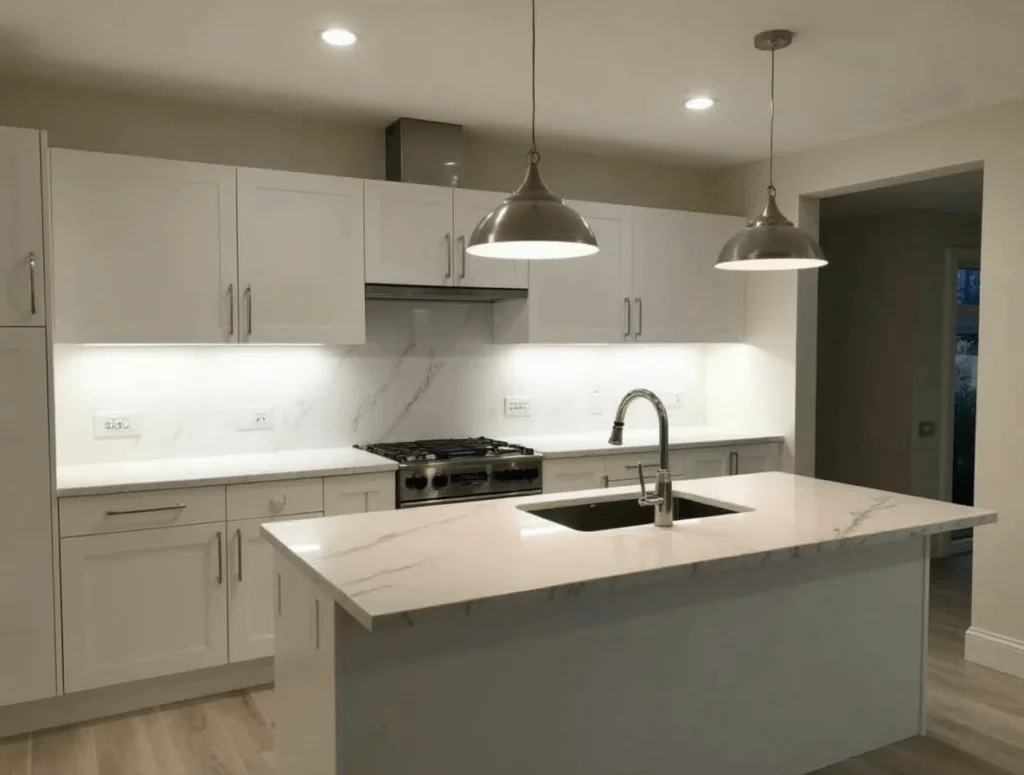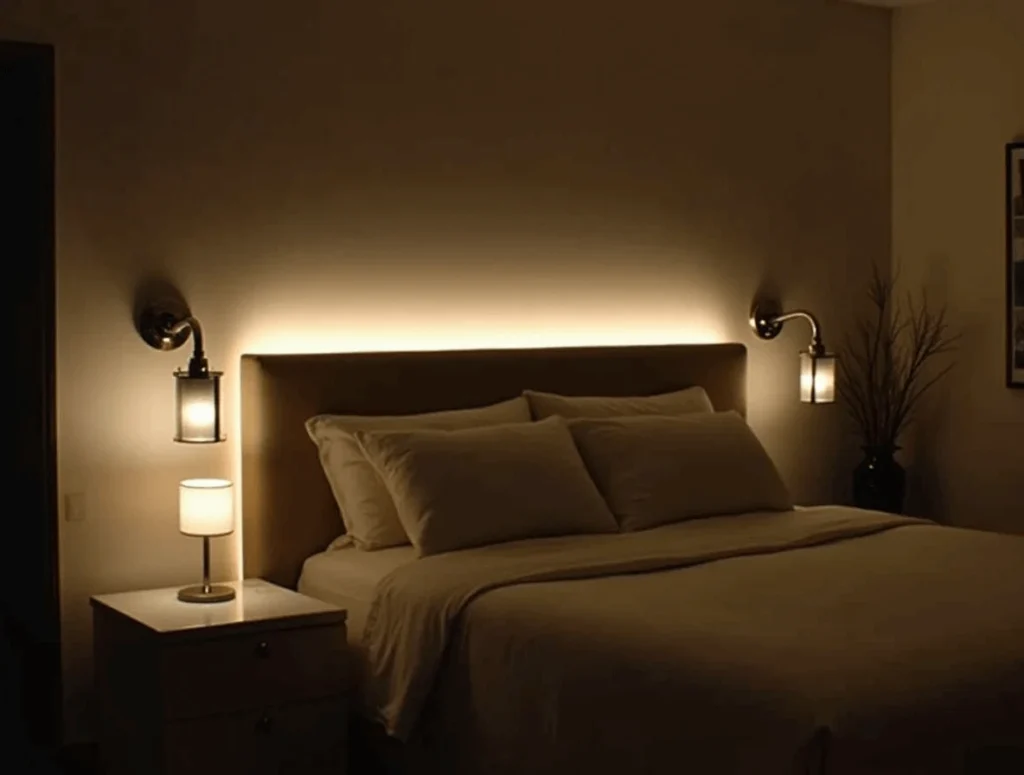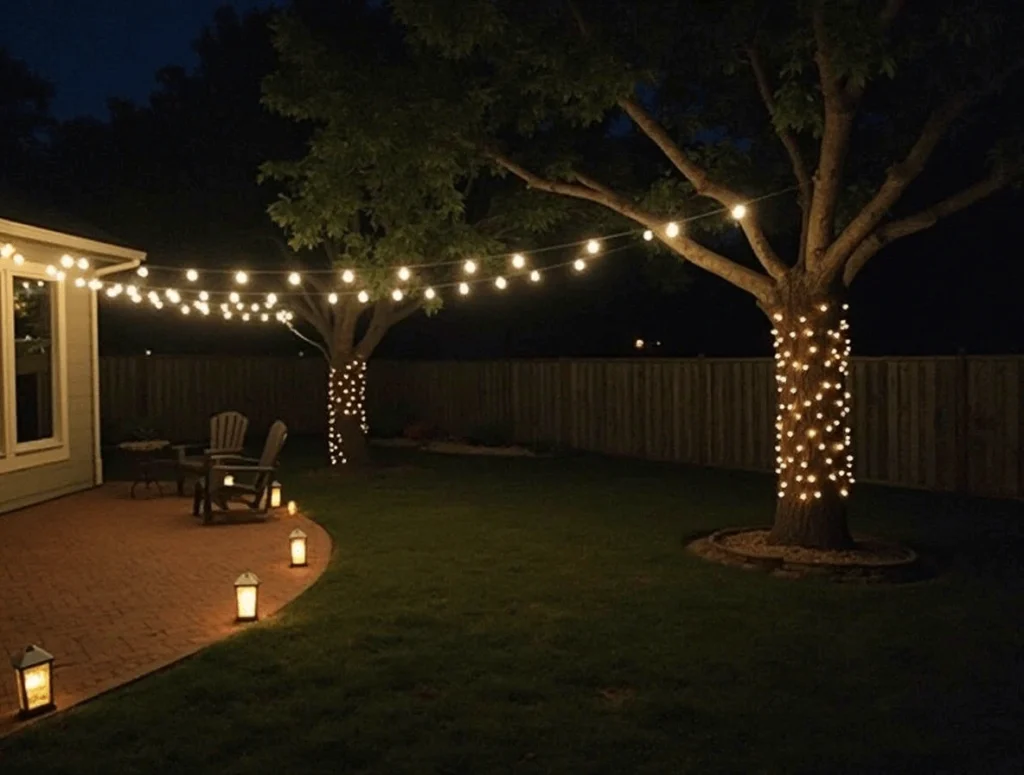Have you ever entered a space and sensed that something wasn’t quite right? It might not be the furniture or the color scheme but the lighting. Lighting plays a crucial role in home design, shaping not only the look but also the mood and functionality of your space. Without the right lighting, even the most beautiful decor can fall flat, leaving your home feeling uninviting or impractical.
Many homeowners make common mistakes when it comes to lighting, such as relying solely on overhead fixtures or neglecting task-specific lighting. These missteps can lead to poorly lit areas, high energy bills, or an atmosphere that doesn’t suit the purpose of the room. The good news? With the right lighting tips for home, you can transform your living spaces into bright, welcoming, and functional havens.
In this guide, we’ll explore the importance of lighting in home design and how to avoid the pitfalls that many encounter. From understanding modern lighting designs to incorporating layered lighting examples, you’ll discover actionable advice to illuminate your home like a pro. Let’s shine a light on the best practices and solutions for your unique needs!
Understanding the Basics of Home Lighting
Lighting is more than just a functional necessity—it’s a fundamental part of creating a welcoming and visually appealing home. By understanding the different types of lighting and how to maximize natural light, you can make your living spaces both practical and beautiful. With the right lighting tips for home, you can truly transform your space. Let’s break it down step by step.
Different Types of Lighting
Ambient Lighting (General Illumination)
Ambient lighting is the foundation of your home’s lighting design. It provides overall illumination, ensuring that your space is well-lit and comfortable. Think of ceiling fixtures, chandeliers, or recessed lighting that spread light evenly throughout a room. For effective ambient lighting, consider using dimmer switches to adjust the brightness according to the time of day or activity.
Task Lighting (Focused, Functional Lighting)
Task lighting is intended to assist you in carrying out particular tasks, like working, cooking, or reading. Examples include under-cabinet lights in the kitchen, desk lamps in a home office, or bedside table lamps for nighttime reading. Properly placed task lighting ensures you have adequate illumination without causing eye strain. Including task lighting in your home design is one of the most practical lighting tips for home improvement.
Accent Lighting (Highlighting Features)
Accent lighting adds depth and drama to your space by drawing attention to specific features like artwork, architectural details, or plants. Wall sconces, track lighting, or spotlights are great examples. Use accent lighting sparingly to avoid overwhelming the room while enhancing its visual appeal.
Decorative Lighting (Style-Enhancing Fixtures)
Decorative lighting is all about making a statement. Whether it’s a bold pendant light, an intricate chandelier, or a string of fairy lights, decorative fixtures contribute to the overall aesthetic of your space while providing supplementary light.
Maximizing Natural Light
Importance of Natural Light for Mood and Energy
Natural light isn’t just free—it’s also a mood booster. Sunlight helps regulate your body’s natural rhythms, improves focus, and creates an uplifting environment. Ensuring that your home takes full advantage of natural light can make a noticeable difference in how you feel.
Tips for Maximizing Natural Light
- Use sheer curtains or blinds to let light filter in without compromising privacy.
- Place mirrors strategically to reflect light and make rooms feel larger and brighter.
- Opt for reflective surfaces like glass furniture or glossy paint finishes to enhance light distribution.
By understanding these basics, you can create a harmonious lighting plan that not only elevates your home’s functionality but also its overall ambiance. With the right lighting tips for home, you’ll ensure each space is both inviting and energy-efficient.
Crafting a Functional Lighting Plan
Creating a functional lighting plan for your home doesn’t have to be overwhelming. By approaching it step-by-step, you can ensure each space is both practical and visually appealing. Here are some lighting tips for home design that will guide you through the process.
Assess Room Functions and Layout
Every room in your home serves a unique purpose, and your lighting should reflect that. Start by analyzing how each room is used. For example:
- Living Spaces: These areas often serve multiple purposes, from entertaining guests to relaxing with family. Layered lighting examples like combining ambient lighting with task and accent lighting can enhance flexibility.
- Kitchens: Focus on task lighting for workspaces, such as the best lighting for kitchen counters. Under-cabinet LED lights are an excellent choice for functionality and energy efficiency.

- Bedrooms: Create a cozy atmosphere with bedroom ambiance lighting. Use dimmable lights to adjust brightness for different activities, like reading or winding down.
Bedroom Lighting guide : The Essential Room Lighting Guide: 5 Expert Tips You Need
- Home Offices: Proper task lighting for workspaces is essential to reduce eye strain and maintain focus. A desk lamp with adjustable brightness is a smart addition.
By tailoring your lighting choices to each room’s function, you can create a cohesive and efficient plan.
Drafting Your Floor Plan
A well-thought-out floor plan is key to successful lighting. Begin by sketching your space and marking:
- Windows: Natural light sources should be maximized wherever possible.
- Doors and Immovable Objects: These will help you determine fixture placement.
- Furniture Layout: This helps identify areas needing task or accent lighting.
Consider how natural light flows throughout the day. Use ceiling lighting tips for home planning to ensure overhead fixtures complement natural light rather than overpowering it.
Selecting the Right Fixtures
The fixtures you choose should align with your room’s style and scale. Here are some tips:
- Size Matters: Oversized fixtures can overwhelm a small room, while tiny lights may get lost in larger spaces.
- Energy Efficiency: Opt for LED light bulbs. These not only save energy but also last longer than traditional bulbs. Following an LED light bulbs guide can help you pick the right options for your needs.
- Style and Function: Whether you’re going for modern lighting designs or a classic aesthetic, make sure your fixtures are as functional as they are stylish.
By assessing room functions, drafting a floor plan, and selecting the right fixtures, you can craft a lighting plan that’s tailored to your home’s unique needs. Following these lighting tips for home improvement will ensure every space is both beautiful and practical.
Avoiding Common Lighting Mistakes
Crafting the perfect lighting setup requires more than just installing fixtures and flipping a switch. Avoiding common lighting mistakes can make all the difference in transforming your home into a comfortable, functional, and visually appealing space. Here are essential lighting tips for home design that will help you sidestep these pitfalls.
Relying Solely on Overhead Lighting
One of the biggest mistakes you can make is depending entirely on overhead lighting. While ceiling lights are great for general illumination, they often create harsh shadows and fail to provide the layered lighting your home needs. Instead, aim for a mix of light sources, such as:
- Ambient Lighting: Provides overall brightness for the room.
- Task Lighting: Focused light for specific activities, like a desk lamp in your home office.
- Accent Lighting: draws attention to elements like artwork or architectural details.
Layered lighting examples show how combining these types can create a balanced and inviting atmosphere in any space.
Incorrect Bulb Selection
Choosing the wrong light bulbs can result in a room that feels too dim, too harsh, or simply mismatched. To get it right, consider:
- Lumens vs. Wattage: Focus on lumens for brightness, as wattage only indicates energy usage.
- Color Temperature: Soft white bulbs (2700-3000K) are ideal for bedrooms and living rooms, while cooler white bulbs (4000-5000K) work best for task areas like kitchens.
- Energy Efficiency: LED light bulbs are a smart choice for their longevity and reduced energy consumption. Consult an LED light bulbs guide to find the best options for your needs.
Picking the right bulb for each space ensures both functionality and ambiance.
Poor Placement and Spacing
Improperly placed lighting fixtures can cause issues like glare, shadows, and uneven lighting. Avoid these problems by following these tips:
- Avoid Glare: Position lights so they don’t shine directly into your eyes or reflect off shiny surfaces.
- Recessed Lighting Spacing: Install recessed lights approximately 4-6 feet apart to ensure even coverage without over-lighting.
- Pendant Light Height: Hang pendants 30-36 inches above kitchen counters or dining tables for optimal functionality and aesthetics.
Planning fixture placement carefully can make your lighting both practical and visually pleasing.
By addressing these common mistakes and implementing these lighting tips for home improvement, you can create a lighting design that’s not only beautiful but also functional and efficient.
Room-Specific Lighting Tips
Creating a well-lit home requires tailoring your lighting choices to suit the unique needs of each room. With these room-specific lighting tips for home design, you can achieve the perfect balance of functionality and style.
Living Room
The living room can be used for entertaining visitors as well as unwinding with loved ones. To accommodate this versatility, incorporate a mix of lighting options:
- Dimmable Overhead Lighting: Ceiling lighting tips for home include using chandeliers or recessed lights that can be dimmed to suit different moods.
- Floor and Table Lamps: Place these strategically for task lighting, such as reading or crafting.
- Accent Lighting: Use LED strips or spotlights to draw attention to artwork, shelves, or architectural elements. Layered lighting examples show how this combination can create depth and ambiance.
Kitchen
The kitchen is a workspace where proper lighting is crucial for safety and functionality. Here’s how to light it effectively:
- Task Lighting for Counters and Sinks: Under-cabinet lights are ideal for illuminating work areas, ensuring you can chop and prep safely.
- Pendants for Aesthetic Appeal: Hang pendant lights over the island or dining table to add a touch of modern lighting designs while providing focused illumination.
- Recessed Lights: Use these for general lighting to ensure every corner is well-lit.
Bedroom
A bedroom should feel cozy and calming, with lighting that supports relaxation:

- Bedside Lamps and Sconces: These provide soft light for reading or winding down. Opt for adjustable lamps for flexibility.
- Avoid Harsh Overhead Lights: Instead, choose dimmable fixtures or indirect lighting to create a soothing atmosphere.
- Bedroom Ambiance Lighting: Use LED strips behind the headboard or around the ceiling perimeter for a warm glow.
Bathroom
Bathrooms require functional yet stylish lighting to accommodate grooming and relaxation:
- Layered Lighting for Mirrors: Combine wall-mounted sconces and overhead lights to minimize shadows while getting ready.
- Bright Lumens for Grooming Tasks: Use bright white bulbs (3000-4000K) for clarity, especially around mirrors.
- General Illumination: Ensure the entire space is evenly lit with recessed lights or flush-mount fixtures.
Outdoor Spaces
Outdoor lighting guarantees safety and improves the curb appeal of your house:
- Pathway Lighting: Illuminate walkways with low-voltage lights or solar-powered options to prevent accidents and add charm.
- Porch and Backyard Lights: Combine functional fixtures, such as wall-mounted lanterns, with decorative options like string lights or LED floodlights for ambiance.
- Energy-Efficient Options: Choose energy-efficient home lighting solutions, such as LED bulbs, to reduce electricity costs without compromising brightness.

By following these room-specific lighting tips for home improvement, you can create a cohesive and functional lighting plan that enhances every corner of your living space.
Advanced Tips for a Perfect Lighting Setup
Achieving the ideal lighting setup requires a blend of creativity and practicality. By exploring advanced techniques, you can elevate the ambiance and functionality of your home. Let’s dive into two key areas that will help you master lighting tips for home improvement.
Using Dimmers and Smart Technology
Incorporating dimmers and smart technology into your lighting plan allows for unparalleled flexibility and energy efficiency. Dimmers let you adjust the light intensity to suit different moods and tasks, such as creating a cozy ambiance for movie nights or brightening the room for detailed activities. Modern lighting designs often incorporate dimmable LED light bulbs, which are both versatile and energy-efficient.
Smart lighting solutions take this a step further by offering automation and convenience. Imagine controlling your lights through a voice assistant or scheduling them to turn on and off at specific times. These systems integrate seamlessly with smart home devices, giving you complete control over your home’s lighting with minimal effort. For instance, using smart bulbs in your bedroom can allow for gradual dimming at night, helping you relax and prepare for restful sleep.
Highlighting Architectural Features
Accent lighting is an effective way to highlight the distinctive design features of your house. Techniques such as backlighting, uplighting, and wall washing can draw attention to architectural features like textured walls, crown molding, or decorative niches. For example, placing uplights at the base of a feature wall can create dramatic shadows and enhance its visual appeal.
Layered lighting examples, which combine ambient, task, and accent lighting, ensure that each space serves both functional and aesthetic purposes. In a living room, this might mean using wall sconces to highlight artwork, while a pendant light provides general illumination. For outdoor spaces, pathway lighting and backlit features can add depth and safety to your landscape design.
By integrating these advanced lighting techniques, you can transform your home into a well-lit haven that’s both stylish and functional. Whether you’re embracing smart technology or experimenting with accent lighting, these strategies will help you avoid common mistakes and achieve a lighting setup that enhances your lifestyle.
Conclusion
To wrap up, mastering lighting tips for home can completely transform your living spaces. By focusing on layered lighting, such as combining ambient, task, and accent lighting, you’ll create a balanced and inviting environment. Don’t forget to consider modern lighting designs, like LED light bulbs, which not only enhance your decor but also improve energy efficiency. Whether you’re planning the best lighting for kitchen counters or finding the right bedroom ambiance lighting, thoughtful planning is key.
Take your time to assess the needs of each room, from home office lighting ideas to outdoor lighting solutions. With a bit of planning and these expert tips, you’ll avoid common mistakes and make your home shine. Remember, great lighting isn’t just about brightness—it’s about setting the right mood and functionality for your space. So, get creative and design a lighting scheme that suits your lifestyle and enhances your home’s beauty.
